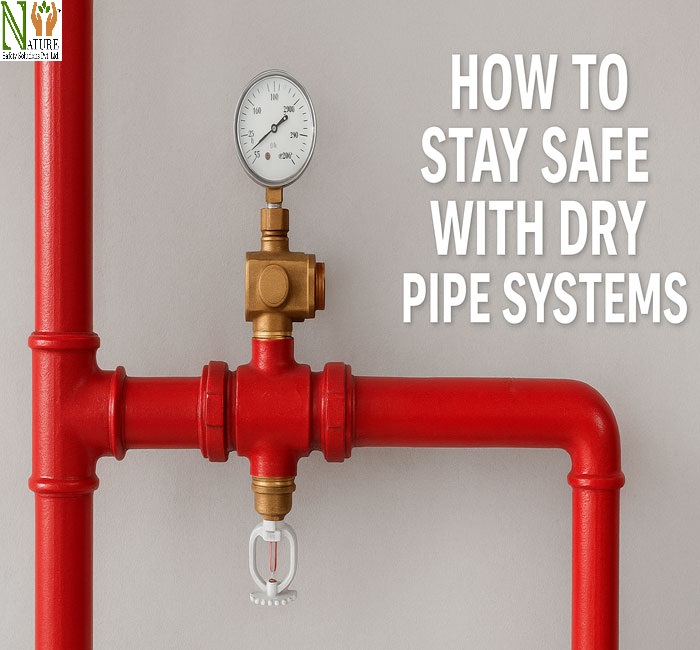Fire is one of the biggest threats to any building. It spreads fast and can cause heavy damage. That is why sprinkler systems are installed in homes, offices, and factories.
In most cases, wet pipe systems are used. They are simple and quick. But in cold areas, water can freeze inside the pipes. Frozen water blocks the system. To solve this problem, dry pipe systems are used.
This guide explains what dry pipe systems are, how they work, where they are useful, and why they matter for fire safety.

What Is a Dry Pipe System?
A dry pipe system is a sprinkler system that does not keep water in its pipes. Instead, the pipes are filled with air or nitrogen. The water is stored behind a valve called the dry pipe valve.
When a fire starts, the air pressure drops, and the valve opens. Only then does water flow into the pipes and out through the sprinkler. This small delay makes the system different from wet pipe systems.
How It Works
The working process is simple. A fire creates heat. The heat breaks the glass bulb of the sprinkler. Air rushes out. Pressure falls. The valve opens. Water fills the pipes and sprays onto the fire.
The process takes a little longer than in wet pipe systems, but it still controls the fire before it grows large.
Where They Are Used
Dry pipe systems are not installed everywhere. They are used only where freezing can happen.
For example, cold storage rooms, parking garages, unheated warehouses, and outdoor loading areas often use dry pipe systems. In these places, wet systems are risky because water might freeze inside the pipes.
Advantages
Dry pipe systems give strong protection in cold areas. They prevent frozen water from blocking the pipes. They also start automatically when a fire occurs, just like wet systems.
Even though water arrives a little late, the system is still effective in controlling fire and saving lives.
Limitations
Dry pipe systems also have some limits. They cost more to install. They need more care and parts, such as air compressors. And because water enters only after air escapes, there is always a short delay.
These limits are the reason they are used only where wet pipe systems cannot work.
Maintenance
To keep the system ready, regular maintenance is important. The valve should be checked, the air pressure tested, and the pipes inspected for leaks. Sprinkler heads must also be clean and in good condition.
Experts suggest a professional inspection once every year. This ensures the system will work during a real emergency.
Common Myths
Some people think sprinklers open all at once. That is not true. Only the sprinklers near the fire open.
Others believe smoke sets them off. This is also wrong. Sprinklers react only to heat.
There is also a fear of water damage. In reality, sprinklers use far less water than fire hoses. They prevent more damage than they cause.
Why They Matter
In freezing conditions, no other sprinkler system can do the job as well. Dry pipe systems give safety where it is otherwise hard to protect property. They control fire, reduce damage, and give firefighters time to act.
Also read:
- Fire Alarms in Factories: The First Step Toward Worker Safety
- From Sparks to Safety: The Benefits of Fire Alarms in Manufacturing Plants
- How Firefighters Battle Blazes: Tools, Training, and Risks
- Fire Safety at Home: Simple Habits That Can Save Lives
- Fire Equipment: The Tools That Stand Between You and Danger
